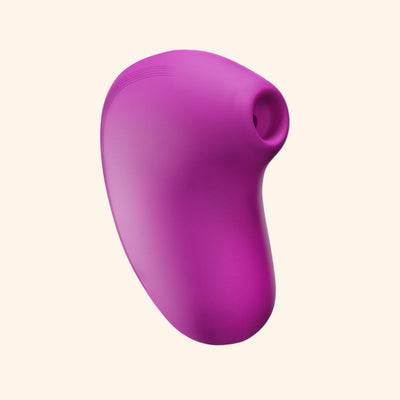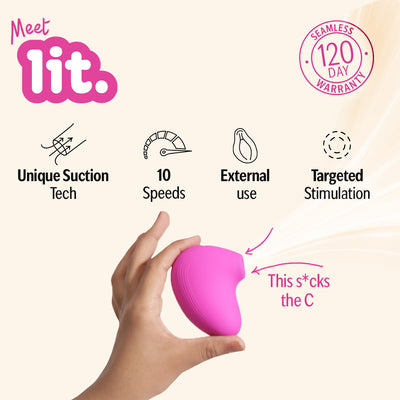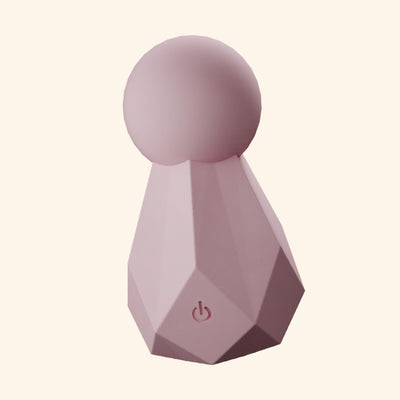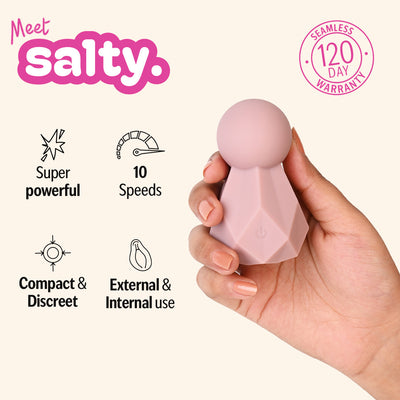Your cart is currently empty

If you’ve ever seen a blindfold scene in a movie or stumbled across a sleek leather paddle online and thought “hmm… maybe?” — welcome, you’re in good company.
Exploring BDSM toys doesn’t mean you’re suddenly into extremes or pain. It’s about curiosity, control, trust, and learning new ways to experience pleasure: physically and emotionally.
And honestly, more Indians are getting curious about it than you’d think. From handcuffs on Amazon to boutique bondage toy brands popping up on Instagram, BDSM is slowly shaking off its taboo label and stepping into the bedroom mainstream.
Here’s everything you need to know — from what toys do to how to stay safe.
What Are BDSM Toys and How Do They Work?
Simply put, BDSM toys are tools that help you explore dominance, submission, sensation, and trust. They can be soft or intense, physical or psychological, depending on what turns you on.
They include:
-
Bondage toys like cuffs, ropes, and restraints (for light restraint or full control)
-
Impact toys like whips and floggers (for that sting-meets-pleasure thrill)
-
Sensation toys like feathers, candles, and ice (to heighten body awareness)
Each toy helps build connection, communication, and a deeper sense of trust with your partner. And yes, it can be a lot of fun.
Understanding Consent and Safe Words Before You Begin
Before anything else: BDSM starts with consent, not cuffs.
That means everyone involved should want to play — freely, enthusiastically, and with clear boundaries.
Create a safe word — a word that immediately stops everything if someone feels uncomfortable. (Most people use traffic light codes: red = stop, yellow = slow down, green = all good.)

Remember: good kink is never about pushing limits without consent. It’s about trusting someone enough to explore them together.
Now that you know the basics, let’s look at how to stay safe while playing.
Bondage Toys 101: From Ropes to Restraints
Bondage is the art of restriction: holding someone still so they surrender control. It can be sensual, relaxing, or powerfully erotic.
For beginners, bondage toys like soft ties, blindfolds, or a silk scarf are a great place to start. Skip the rough jute rope, go for satin or cotton first.

If you’re feeling braver, you can explore toys like cuffs, spreader bars, or harnesses designed for comfort and safety.
Exploring Ankle and Wrist Restraints Safely
Ankle and wrist restraints are beginner favorites because they’re easy to use and instantly build tension and intimacy.
Start light:
-
Use soft cuffs or adjustable Velcro straps.
-
Always keep safety scissors nearby in case of quick release.
-
Avoid cutting off circulation: you want submission, not injury.
You can use restraints for teasing, oral play, or simply to heighten anticipation. Sometimes, being unable to move even a little makes every touch feel ten times stronger.
Whips, Floggers, and Paddles — What’s the Difference?
If you’re thinking Fifty Shades, let’s clear things up: not all impact play is about pain.
-
Whips are long and flexible: they deliver a sharp, stinging sensation.
-
Floggers have multiple tails that spread the impact, creating a thuddy, rhythmic feel.
-
A paddle in sex offers a broader hit: think of it as a firm, controlled spank.
Each toy creates a different kind of stimulation, and for many, the arousal isn’t just physical — it’s psychological. It’s about power, surrender, and trust.
Sensation Play: How to Mix Pain, Pleasure, and Control
BDSM isn’t only about pain. It’s about contrast. Try alternating soft and sharp sensations.
Use ice cubes, feathers, candle wax (only body-safe soy candles), or gentle scratches between hits or restraint. This keeps your partner guessing and their nerves alive.

Sensation play is ideal for couples who want to dip a toe into kink without jumping straight into whips and chains.
Emotional Safety: What Aftercare Looks Like
Aftercare is what happens after play — and it’s just as important as what happens during.
Cuddle. Hydrate. Check in.
Ask questions like “How did that feel for you?” or “Do you need anything right now?”
Aftercare helps regulate adrenaline, reinforces trust, and keeps both partners emotionally grounded.
Building Trust and Communication with Your Partner
BDSM is built on communication. The more openly you talk about fantasies, limits, and curiosity, the more fulfilling it becomes.
Start small. Maybe mention you’d like to be blindfolded next time, or that you’re curious about using a paddle in sex.
Trust grows with each shared experience, not overnight.

BDSM for the Anxious or Overthinkers
If you’re anxious, easily distracted, or a chronic overthinker… BDSM might actually help.
When someone ties you up or takes control (safely), it can quiet your mind and anchor you in your body. For many, that surrender is healing, not scary.
The key: find a partner you trust, start slow, and keep the focus on connection.
How to Choose the Right Beginner BDSM Toys
When shopping for BDSM toys, keep these in mind:
-
Material: Look for body-safe silicone, leather, or fabric.
-
Adjustability: Especially for ankle and wrist restraints, they should never dig into your skin.
-
Ease of cleaning: Hygiene is crucial.
-
Quality over quantity: One well-made toy > a cheap box of random ones.
If you’re buying online, brands like Tassma or international names like Lovehoney and Lelo have beginner-friendly, safety-tested gear.












